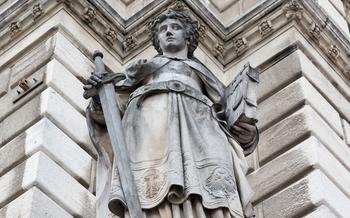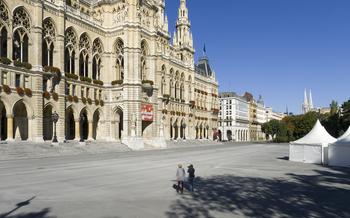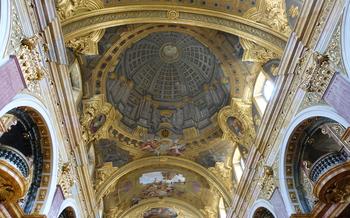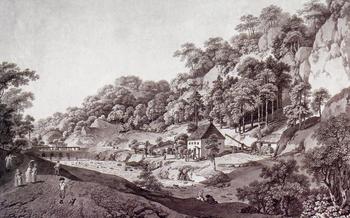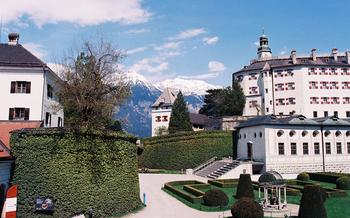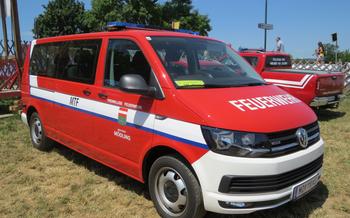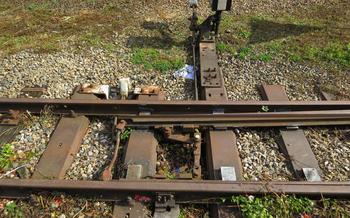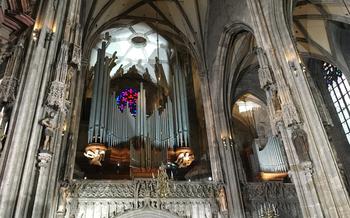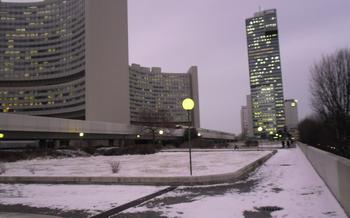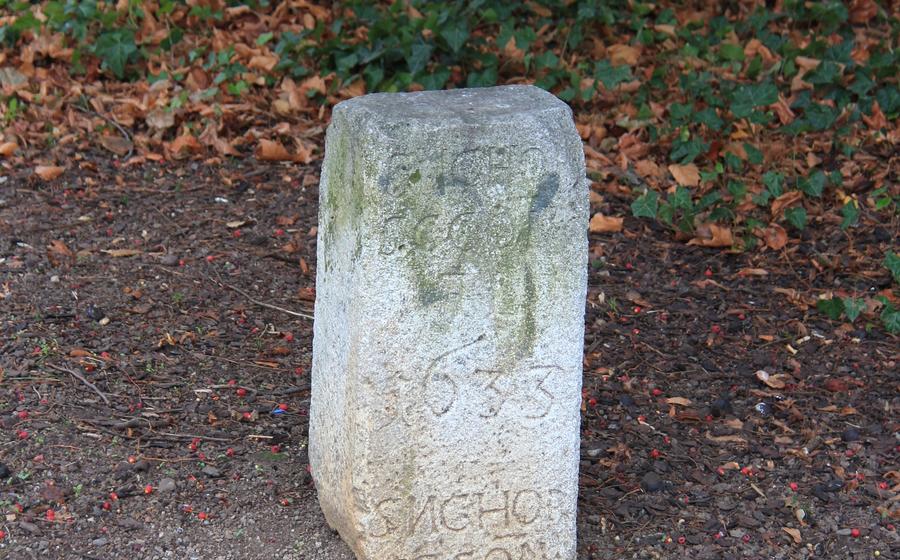
Vienna City Hall (Rathaus)
- History of the Vienna City Hall (Rathaus)
- Architectural Highlights:
- Guided Tours: Unveiling the Grandeur of Vienna's City Hall
- Public Events and Exhibitions
- Exploring the Surroundings
- Accessibility: Navigating the Rathaus for All
- Photography and Videography
- Souvenirs and Gifts
- Food and Drinks
- Getting There
- Opening Hours and Admission Fees:
- Top Photo Spots:
- Family-Friendly Activities
- Historical Significance
- Insider Tip: Uncovering the Rathaus's Hidden Gem
History of the Vienna City Hall (Rathaus)
The majestic Vienna City Hall, also known as the Rathaus, stands as a symbol of Viennese civic pride and architectural grandeur. Its history dates back to the 19th century when the city's rapidly growing population necessitated a new, larger administrative center. The construction of the Rathaus commenced in 1872 under the direction of the renowned architect Friedrich von Schmidt, who envisioned a building that would reflect the city's imperial heritage and growing prosperity.
The Rathaus was built in the Gothic Revival style, a popular architectural movement of the time. Its intricate facade features a profusion of sculptures, carvings, and inscriptions, each telling a unique story about the city's history and culture. The building's central tower, soaring 105 meters above the bustling Rathausplatz, offers panoramic views of Vienna and its surroundings.
The Rathaus has undergone several renovations and expansions over the years, adapting to the changing needs of the city. The most significant renovation took place in the 1950s after the building suffered extensive damage during World War II. The restoration efforts were meticulous, ensuring that the Rathaus's original grandeur was preserved while incorporating modern amenities and conveniences.
One of the most fascinating aspects of the Rathaus's history is the legend surrounding its construction. It is said that the architect, Friedrich von Schmidt, included a secret chamber within the building, known as the "Schmidt-Halle". This hidden room, accessible through a concealed door, was rumored to be used for secret meetings and gatherings. While the existence of the Schmidt-Halle remains a mystery, it adds an air of intrigue and mystique to the Rathaus's rich history.
Architectural Highlights:
The Vienna City Hall is a masterpiece of Gothic Revival architecture. Its imposing facade is adorned with intricate carvings, sculptures, and inscriptions that reflect the building's historical and cultural significance. The grand entrance, flanked by two towers, leads into a spacious courtyard that showcases the building's symmetrical design. The Rathaus's interior is equally impressive, with a grand staircase, assembly hall, and numerous other notable features.
The building's facade is dominated by a series of pointed arches, which create a sense of height and grandeur. The arches are filled with intricate carvings, including gargoyles, mythical creatures, and scenes from Viennese history. The building's towers are topped with spires that reach towards the sky, creating a dramatic silhouette against the Viennese skyline.
The assembly hall, located on the first floor, is the most impressive room in the Rathaus. It features a high, vaulted ceiling, ornate chandeliers, and a series of large windows that flood the room with natural light. The walls of the assembly hall are decorated with murals depicting scenes from Austrian history.
Guided Tours: Unveiling the Grandeur of Vienna's City Hall
In addition to exploring the Rathaus's exterior, visitors can delve deeper into its history and architecture through guided tours. These tours, offered in multiple languages, provide an immersive experience that brings the building's grandeur to life. Led by knowledgeable guides, visitors will journey through the opulent halls and chambers of the Rathaus, gaining insights into its symbolic importance and the vital role it plays in Viennese governance.
Tours typically start from the grand entrance, where visitors are greeted by the majestic facade and intricate sculptures. Guides will point out notable features and explain the symbolism behind them, such as the allegorical figures representing Austria's federal states. Visitors will then proceed inside, where they will marvel at the stunning architecture of the grand staircase, adorned with marble balustrades and intricate carvings.
As the tour progresses, visitors will explore various rooms and chambers within the Rathaus, including the assembly hall, where the Vienna City Council convenes for meetings. The guides will provide historical context and anecdotes about important events that have taken place within these walls. Visitors will also get a glimpse into the mayor's office, a stately room where important decisions are made.
Throughout the tour, guides will share fascinating stories and facts about the Rathaus's construction, renovations, and its role in Viennese history. Visitors will learn about the building's significance as a symbol of democracy and its enduring legacy as a landmark of civic pride.
To book a guided tour, visitors can either reserve online or inquire at the Rathaus information desk. Tours are available at various times throughout the day, and advance booking is recommended to secure a spot. Whether you're a history buff, an architecture enthusiast, or simply curious about Vienna's iconic landmarks, a guided tour of the Rathaus is an unforgettable experience that should not be missed.
Public Events and Exhibitions
The Vienna City Hall (Rathaus) is not just a stunning architectural masterpiece but also a vibrant cultural hub that hosts a diverse range of public events and exhibitions throughout the year. From grand concerts and art exhibitions to festive markets and community gatherings, the Rathausplatz transforms into a lively stage for cultural expression and social interaction.
One of the highlights of the Rathaus's event calendar is the annual Rathausplatz Christmas Market, a beloved Viennese tradition that attracts visitors from near and far. The square is adorned with twinkling lights, festive decorations, and wooden stalls offering a delightful array of holiday treats, handcrafted gifts, and seasonal delicacies. The air fills with the scent of roasted chestnuts, mulled wine, and gingerbread, creating a magical atmosphere that captures the essence of the Viennese Christmas spirit.
Throughout the year, the Rathaus also hosts a variety of art exhibitions in its grand halls and galleries. These exhibitions showcase the works of renowned Austrian and international artists, spanning a diverse range of styles and genres. From contemporary installations to historical masterpieces, there is something to captivate art enthusiasts of all tastes.
For those interested in Viennese culture and history, the Rathaus offers guided tours that delve into the building's rich past and significance. Visitors can explore the grand assembly hall, the mayor's office, and other important rooms, gaining insights into the political and administrative functions of the city. The tours also shed light on the Rathaus's architectural highlights and the stories behind its construction and renovations.
To stay updated on upcoming events and exhibitions, visitors can check the Rathaus's official website or pick up a program at the Rathaus information desk. Whether you're seeking cultural enrichment, festive cheer, or a glimpse into Viennese history, the Rathaus is a must-visit destination that offers a plethora of experiences for visitors of all ages.
Exploring the Surroundings
The Rathausplatz, where the Vienna City Hall stands proudly, is a vibrant public square that offers visitors a wealth of attractions and activities. The square is adorned with beautiful gardens, known as the Rathauspark, which provide a tranquil oasis amidst the bustling city. Take a leisurely stroll through the park, admiring the colorful flower beds, manicured lawns, and majestic trees that create a serene atmosphere.
In the vicinity of the Rathaus, you can find a diverse range of architectural wonders that reflect Vienna's rich history and culture. The Burgtheater, a renowned theater known for its world-class performances, is just a short walk away. Marvel at its opulent facade and immerse yourself in the vibrant theater scene that has graced its stage for centuries.
Another nearby attraction is the Volksgarten, a beautiful park that offers a tranquil escape from the city's hustle and bustle. Wander through its serene paths, admire the stunning flower displays, and enjoy a moment of peace and tranquility.
The Hofburg Palace, the former imperial palace of the Habsburg dynasty, is also within easy reach of the Rathaus. Explore its grand halls, opulent apartments, and fascinating museums, and delve into the rich history of the Austrian monarchy.
To fully appreciate the architectural grandeur of the area, consider embarking on a walking tour or self-guided exploration. Stroll along the Ringstrasse, a majestic boulevard that encircles the city center, and admire the impressive buildings that line its path. Discover hidden courtyards, charming cafes, and unique shops as you wander through the streets, soaking up the vibrant atmosphere of Vienna.
Accessibility: Navigating the Rathaus for All
The Vienna City Hall (Rathaus) is committed to ensuring accessibility for visitors of all abilities. Wheelchair ramps and elevators provide easy access to all floors of the building, including the grand staircase and assembly hall. Accessible restrooms are conveniently located throughout the Rathaus, and staff is always ready to assist visitors with disabilities.
To ensure a smooth and enjoyable visit, here are some tips for navigating the Rathaus: - When entering the building, look for the designated accessible entrances, which are clearly marked with signage. - If you require assistance with stairs or elevators, feel free to ask a member of the staff for guidance. - The Rathauspark, located adjacent to the building, is fully accessible with paved pathways and ramps. It offers a serene and inclusive space for visitors to relax and enjoy the outdoors. - Guided tours of the Rathaus are also accessible for visitors with disabilities. Advance notice is recommended to ensure that appropriate arrangements can be made.
With its commitment to accessibility, the Vienna City Hall welcomes visitors from all backgrounds to experience its architectural grandeur and historical significance.
Photography and Videography
The Vienna City Hall welcomes visitors to capture the beauty of its architecture and surroundings through photography and videography. However, it is essential to adhere to certain guidelines to ensure respect for the building and its visitors.
General Guidelines:
-
Personal Use: Visitors are generally allowed to take photos and videos for personal, non-commercial purposes. Tripods and selfie sticks are permitted in designated areas.
-
Flash Photography: Flash photography is generally not allowed inside the building to preserve the artwork and exhibits.
-
Professional Photography and Videography: Professional photographers and videographers require a permit from the Rathausverwaltung (City Hall Administration) for commercial or editorial purposes. Applications must be submitted in advance.
-
Respect for Privacy: Visitors should be mindful of others' privacy when taking photos or videos. Avoid capturing individuals without their consent, especially during events or official functions.
Top Photo Spots:
-
Rathausplatz: Capture the iconic facade of the Rathaus from the square, with its intricate sculptures and surrounding greenery.
-
Arcades: Explore the picturesque arcades that flank the Rathaus, offering unique perspectives and architectural details.
-
Interior Highlights: Don't miss the grand staircase, assembly hall, and other notable interiors, each offering stunning photo opportunities.
Tips for Great Shots:
-
Composition: Experiment with different angles and perspectives to create dynamic compositions. Utilize leading lines and symmetry to enhance the visual impact.
-
Lighting: Natural light often provides the best illumination. Visit during the golden hours (sunrise and sunset) for warm, diffused lighting.
-
Details: Zoom in on intricate details like sculptures, carvings, and inscriptions to capture the Rathaus's craftsmanship.
-
People and Movement: Capture the vibrant atmosphere by including people interacting with the Rathaus. Wait for opportune moments to capture movement and energy.
Souvenirs and Gifts
The Vienna City Hall (Rathaus) offers a range of souvenirs and gifts that allow visitors to take a piece of this iconic landmark home with them. Whether you're looking for a memento of your visit or a thoughtful gift for a friend or family member, you'll find something special at the Rathaus gift shop.
The gift shop, located in the Rathaus's arcades, stocks a variety of items inspired by the building and its history. From postcards and magnets featuring stunning images of the Rathaus to replicas of the building's famous sculptures, there's something for every taste and budget. You can also find unique souvenirs such as Rathaus-themed jewelry, scarves, and even chocolate bars.
If you're looking for something truly special, consider purchasing a piece of Rathaus-related artwork. Local artists often sell their works in the gift shop, and you can find everything from paintings and sculptures to prints and photographs. These unique pieces are a great way to add a touch of Viennese charm to your home or office.
When shopping for souvenirs at the Rathaus, be sure to take advantage of the gift shop's knowledgeable staff. They can help you find the perfect item and provide information about the building's history and significance. So, whether you're a local or a tourist, make sure to stop by the Rathaus gift shop and pick up a souvenir to remember your visit.
Food and Drinks
The area surrounding the Vienna City Hall offers a diverse range of culinary delights, catering to every taste and budget. From traditional Viennese cuisine to international flavors, there's something for everyone to savor.
For a quick bite, head to one of the many food trucks parked near the Rathausplatz. These trucks offer a variety of options, including classic Austrian dishes like schnitzel and wurst, as well as international favorites like burgers and tacos.
If you're looking for a more substantial meal, there are several restaurants and cafes in the vicinity. For a taste of Viennese tradition, try Gastwirtschaft Wratschko, a beloved local establishment serving classic dishes like Tafelspitz (boiled beef) and Wiener Schnitzel. For a more modern take on Austrian cuisine, visit Das Schick, which offers innovative dishes made with fresh, seasonal ingredients.
For a sweet treat, indulge in a slice of Sachertorte, Vienna's signature chocolate cake, at Café Central, a historic coffee house with a charming atmosphere. Or, for a more casual option, head to Eis Greissler, a popular ice cream shop with a variety of unique and delicious flavors.
No matter what your taste or budget, you're sure to find something to satisfy your appetite in the area surrounding the Vienna City Hall. Be sure to sample some of the local specialties and enjoy the vibrant culinary scene that this vibrant city has to offer.
Getting There
Reaching the Vienna City Hall (Rathaus) is a breeze, thanks to Vienna's efficient public transportation system. The Rathaus is strategically located in the heart of the city, making it easily accessible from various parts of Vienna.
Public Transportation:
Hop on the U-Bahn (subway) and alight at the Rathaus station, right at the doorstep of the City Hall. Lines U2 and U3 conveniently connect you to the Rathaus from different corners of the city.
If trams are more your style, take tram lines 1, 71, or D, which conveniently stop at the Rathausplatz/Burgtheater station, just a stone's throw away from the Rathaus.
By Bus:
Several bus lines also service the Rathaus area. Lines 1A, 2A, 3A, and 40A all make stops at the Rathausplatz/Burgtheater station, providing easy access from various neighborhoods.
Parking:
For those arriving by car, there are limited parking options in the immediate vicinity of the Rathaus. Consider using public transportation or opting for one of the many Park & Ride facilities located on the outskirts of the city, which offer convenient connections to the Rathaus via public transportation.
Opening Hours and Admission Fees:
The Vienna City Hall (Rathaus) is open to the public for guided tours and self-guided exploration during specific hours. To ensure a smooth visit, it's essential to be aware of the operating hours and any admission fees. Here's a breakdown of the opening hours and admission fees:
Opening Hours: - Monday - Friday: 8 AM - 6 PM - Saturday: 9 AM - 1 PM - Sundays and Holidays: Closed
Admission Fees: - Standard Admission: Free of charge - Guided Tours: - Adults: €5 - Children (6-14 years): €3 - Students, Seniors (65+): €4 - Family Ticket (2 adults, 2 children): €12
Tips for Avoiding Crowds: - To avoid the crowds and enjoy a more relaxed visit, consider planning your visit for weekdays or during the off-season (November to March). - Guided tours are available throughout the day, but booking a tour in the morning or late afternoon can help you avoid the midday rush. - If you prefer self-guided exploration, aim to arrive early in the morning or closer to closing time to experience the Rathaus in a quieter atmosphere.
Top Photo Spots:
The Vienna City Hall (Rathaus) offers a wealth of photo opportunities, both inside and out. For a classic shot of the building's grand facade, position yourself across the Rathausplatz. Capture the intricate details of the neo-Gothic architecture, including the spires, arches, and sculptures that adorn the exterior.
For a unique perspective, head to the rooftop terrace of the Rathaus. Here, you can enjoy panoramic views of the city skyline, with the Rathaus tower dominating the foreground. Don't miss the opportunity to photograph the Rathaus at night, when the building is illuminated and casts a magical glow over the surrounding area.
Step inside the Rathaus to discover more photo-worthy spots. The grand staircase, with its sweeping marble steps and ornate railings, is a popular choice. The assembly hall, with its opulent chandeliers, red carpets, and rows of seating, offers a glimpse into the political heart of the city.
For a touch of greenery, explore the Rathauspark, located behind the building. This tranquil oasis features manicured gardens, fountains, and sculptures, providing a picturesque backdrop for your photos. Remember to bring your camera and capture the beauty of the Vienna City Hall from every angle.
Family-Friendly Activities
The Rathaus is a welcoming place for families with children. The Rathauspark, located directly in front of the building, offers a playground with swings, slides, and climbing structures, providing a fun and safe space for kids to play and burn off energy.
During the summer months, the park also hosts various family-friendly events and activities, such as concerts, puppet shows, and arts and crafts workshops. These events are a great way for families to spend quality time together and enjoy the vibrant atmosphere of the Rathausplatz.
To keep kids engaged during a visit to the Rathaus itself, consider taking them on a guided tour specifically designed for families. These tours are often interactive and include fun facts and stories that will capture children's attention. Alternatively, families can explore the building at their own pace, using the Rathaus's family-friendly audio guide, which provides interesting and educational information about the building's history and architecture.
Historical Significance
The Vienna City Hall (Rathaus) stands as a testament to Viennese history, politics, and cultural identity. Since its completion in 1883, the Rathaus has been the epicenter of municipal governance and a symbol of civic pride. Within its walls, countless decisions have been made that have shaped the course of Vienna's development.
The Rathaus has witnessed significant historical events, including the declaration of the First Austrian Republic in 1918 and the signing of the State Treaty that re-established Austria's independence in 195It has also hosted numerous important meetings, conferences, and summits, bringing together world leaders and dignitaries to discuss issues of national and international significance.
One of the most notable events in the Rathaus's history was the signing of the Vienna Declaration in 1961, which laid the foundation for the European Free Trade Association (EFTA). This agreement marked a crucial step towards the integration of European economies and paved the way for the creation of the European Union.
Throughout its history, the Rathaus has played a pivotal role in shaping Vienna's political landscape. It has been the seat of the Vienna City Council and the Mayor of Vienna, who have together guided the city's growth and development. The Rathaus has also been a platform for public discourse and debate, hosting countless political rallies, protests, and demonstrations.
The Rathaus's historical significance is further enhanced by its architectural grandeur and symbolic value. Its Gothic Revival design and intricate ornamentation reflect the city's rich cultural heritage and its aspiration to become a leading metropolis. The Rathaus stands as a symbol of Viennese resilience, having survived two world wars and numerous political upheavals.
Today, the Rathaus continues to be a vibrant and dynamic center of Viennese life. It remains the seat of local government and hosts a diverse range of events, exhibitions, and cultural performances. Visitors to the Rathaus can learn about its fascinating history, admire its architectural beauty, and experience the vibrant atmosphere of this iconic landmark.
Insider Tip: Uncovering the Rathaus's Hidden Gem
Beyond its grand facade and impressive interior, the Vienna City Hall holds a hidden gem that few visitors know about: the Bürgermeisterzimmer, or the Mayor's Office. This room, located on the second floor of the building, is not typically open to the public, but visitors who inquire at the information desk may be granted access if the mayor is not present.
The Bürgermeisterzimmer is a stunning example of Viennese craftsmanship and design. Its walls are adorned with intricate wood paneling, and the ceiling features a beautiful fresco depicting scenes from Viennese history. The room is also home to a collection of antique furniture, including a desk that is said to have been used by Emperor Franz Joseph I.
If you're lucky enough to be granted access to the Bürgermeisterzimmer, take a moment to soak in its beauty and imagine the important decisions that have been made within its walls. It's a unique opportunity to experience the Rathaus from a different perspective and gain a deeper appreciation for its historical significance.
